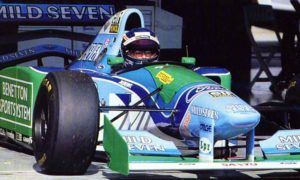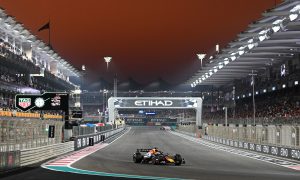
Abu Dhabi's 16-turn 5.2km circuit features two lengthy straights, including the 1.2km back straight between Turns 5 and 6 where cars reach maximum speeds in excess of 330 km/h.
Downforce is less of an issue at Yas Marina, and leaves teams with a genuine choice.
The long power-limited sections make the Yas Marina Circuit a trade-off in terms of where one produces the lap-time: add a little more downforce, go quicker through the corners; take off some downforce and produce the lap-time on the straights.
Teams usually start their weekend with a higher downforce option and potentially trim levels through Friday to select the best compromise in terms of stability, drag and competitiveness, not to mention tyre degradation.

Sergio Perez’s Red Bull topped the speed trap readings in qualifying with 335 km/h while Max Verstappen was also among the fastest runners with 332.1 km/h.
Taking a detailed look at the Dutchman’s first flyer in Q3 which ended with a spectacular 45° degree slide out of the final corner, it’s clear that the hair-raising moment cost Max a spot on the front row of Sunday’s race. Up to that point, Verstappen was ahead of Piastri, Sainz and Hulkenberg.
But the main takeaway from the speed trap data is the position at the bottom of the numbers of poleman Lando Norris, who clocked in at just 324 km/h or 11 km/h adrift from Perez.
That tells us all we need to know about the downforce/drag levels chosen by McLaren this weekend, while it also emphasizes the MCL38’s aero efficiency and its superiority in Yas Marina’s array of corners.
On the topic of aero efficiency, Nico Hulkenberg’s fourth fastest lap in qualifying was no fluke and evidence once again that Haas has produced a solid racing car this season, albeit one that has taken time to develop.
Unfortunately, the Hulk will start his race from P7 on the grid after being handed a three-place grid penalty for overtaking at the pit exit in qualifying.
On the strategy front, on paper Pirelli is forecasting a single-stop race, pointing to running the medium and then the Hard as the fastest choice. But those starting further back – like Ferrari’s Charles Leclerc – will perhaps consider a long opening stint on the hard tyre.
However, degradation, a neutralization and traffic are factors that could also open the door to a two-stop strategy.
F1’s season finale is McLaren’s to lose – but keep an eye on Max.
Keep up to date with all the F1 news via Facebook and X







